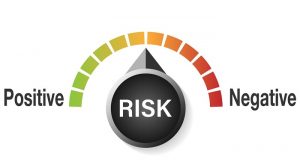
Image credit: Advertisingweek.Com
The emergence of the blogger came relatively soon after the dawn of the Internet and the digital ad ecosystem that supported it. Bloggers wrote content to serve niche audiences that took interest in the focus or style of the author. People who blogged consistently would eventually go on to monetize their platform using tools like Google Ads to automatically call and place advertisements across an inventory of ad space embedded within their sites. Tracking cookies helped drive this revenue by revealing the full customer journey, attributing purchases or conversions to ad views across properties.
With time, many of these websites grew their operational capabilities, becoming full-on publishing businesses themselves. This publisher model stayed true for the better part of 20 years. Now, with the already near-dead tracking cookie and the privacy revolution barring tracking of users across platforms, we are seeing the darkening days of the “mid-tier publisher.” However, the right revenue optimization strategies can help keep these essential forums afloat.
Publishers of All Sizes Facing Headwinds
The underpinning of the free internet experience – cookie-based advertising – is on its last leg. The EU took the first step in protecting internet user privacy by instituting GDPR in 2016. Many states in the U.S. have since followed suit with their own online privacy declarations, regulations and enforcement agencies. Federal legislation will eventually come. It’s no longer acceptable to track user behavior, putting the business of many publishers at great risk.
Every single media and publishing business is facing what is an effective referendum on what’s facilitated their success over the last two decades. Tracking users for advertising purposes is over. Scaled audiences are split across the spectrum of digital media, leaving smaller and smaller slivers of eyeballs to monetize. It’s affecting everyone from mid-tier publishers, to venture capital-backed media outlets that have since gone bankrupt, to household names like CNN. No one is exempt.
The reality is setting in that relying on digital ad placements from the open market won’t suffice. Well-known media brands are exploring every opportunity to replace revenue, including events, direct ad sales, sponsored content and data monetization. Mid-tier publishers, despite their relatively lean operations, will need to find ways to stay afloat. But there is hope. With a specific attention to detail, there are still more ways smaller publishers can prepare themselves to monetize and activate the individuals who consume their content.
Leveraging User Data on the Open Market
The greatest strength of mid-tier publishers remains their loyal audiences. Driven by their niche appeal, approach and/or subject matter, fans of these media businesses tend to have an emotional attachment to the authors who create the content they love. Typically, publishing businesses collect certain types of data (names and emails) to help them stay in touch with readers, letting them know when new content has been published or when other incentives go live. Harnessing the power of these audiences will be crucial in deriving monetized value from the loyal audiences that have been built.
This means getting familiar with taking audience data to the open market. The new infrastructure of digital advertising will be facilitated by the likes of Snowflake, Infosum and others, who provide anonymized datasets for the purpose of ad targeting. Essentially replacing cookies, these companies allow brands to build lookalike audiences for targeting across the digital landscape, and can help support publisher revenue. Mid-tier publishers will need to understand how they can package audience data to create specific niche segments that businesses and brands want to connect with.
Optimizing Ad Units
Publishers likewise need to get creative with dynamic pricing for ad inventory – e.g. pricing that optimizes based on location, size, time of day, time of week and the day of the month. This means going beyond simply placing the appropriate banner and square dimensions so ads can fit, but understanding where on the site they perform best, when they can earn the most and setting parameters that leave every ad bid scrutinized and squeezed down to the penny.
Employing tactics like these will keep publisher inventory optimized for success, squeezing more out of less. The world has become dependent on a free and open internet, but the financial foundations are shifting. The path forward will require already-squeezed publishers to get creative with how they monetize their content. Nobody wants to see independent publishers go away, but in order to survive they need all the help they can get.
What’s your thought about this story?
Kindly like and share





















